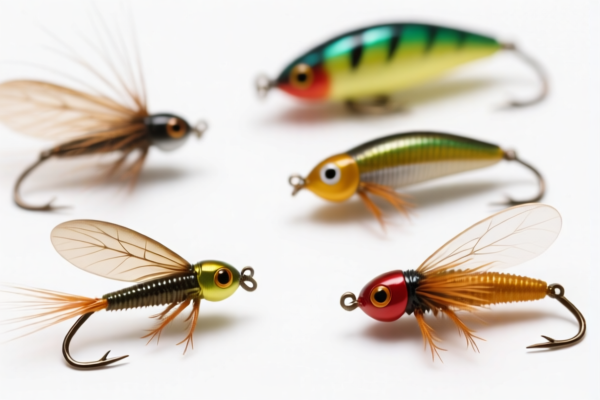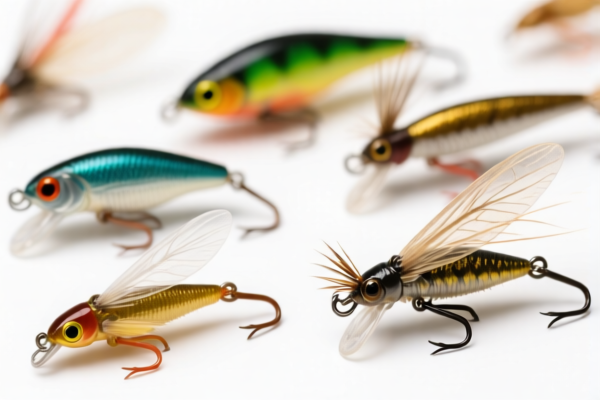| HS Code | Official Doc | Tariff Rate | Origin | Destination | Effective Date |
|---|---|---|---|---|---|
| 2530908050 | Doc | 30.0% | CN | US | 2025-05-12 |
| 2530908010 | Doc | 30.0% | CN | US | 2025-05-12 |
| 3808990800 | Doc | 61.5% | CN | US | 2025-05-12 |
| 3808990800 | Doc | 61.5% | CN | US | 2025-05-12 |
| 3504001000 | Doc | 35.0% | CN | US | 2025-05-12 |
| 3504005000 | Doc | 41.5% | CN | US | 2025-05-12 |
| 3507100000 | Doc | 55.0% | CN | US | 2025-05-12 |
| 3507907000 | Doc | 55.0% | CN | US | 2025-05-12 |
| 4707900000 | Doc | 55.0% | CN | US | 2025-05-12 |
| 4707100000 | Doc | 55.0% | CN | US | 2025-05-12 |
| 4706100000 | Doc | 55.0% | CN | US | 2025-05-12 |
| 4706910000 | Doc | 55.0% | CN | US | 2025-05-12 |




Fishing Bait
Fishing bait is any substance used to attract fish and other aquatic animals to take a hook, usually with the intention of catching them for recreational, commercial, or subsistence fishing. It is a crucial component in angling, influencing the success of a fishing trip.
Materials
Fishing bait encompasses a broad range of materials, categorized as follows:
- Natural Baits: These are items found in the fish's natural diet.
- Worms: Earthworms, redworms, and sandworms are widely used due to their natural appeal.
- Insects: Grasshoppers, crickets, and mealworms mimic the food source of many fish species.
- Crustaceans: Shrimp, crabs, and crayfish are effective, particularly for saltwater species.
- Fish: Small fish like minnows, shiners, and sardines are used as live bait or cut bait.
- Plant Matter: Corn, bread, and potatoes can attract certain fish, especially carp and catfish.
- Prepared Baits: These are commercially produced or homemade mixtures designed to attract fish.
- Doughs: Sweet or savory mixtures, often containing flour, cornmeal, and attractants.
- Pellets: Compressed food particles with added flavors and scents.
- Boilies: Hard, cooked balls of dough, often used for carp fishing.
- Pastes: Soft, moldable baits with strong attractants.
- Artificial Baits: These are man-made lures designed to imitate the appearance and movement of prey.
- Soft Plastics: Worms, grubs, and creature baits made of plastic.
- Hard Baits: Crankbaits, jerkbaits, and topwater lures made of plastic or wood.
- Spoons and Spinners: Metal lures that create flash and vibration.
Purpose & Function
The primary purpose of bait is to attract fish to the hook. This is achieved through:
- Scent: Many baits release strong odors that fish can detect over long distances.
- Sight: The appearance of the bait, its color and shape, can trigger a fish's predatory instincts.
- Taste: The flavor of the bait encourages the fish to hold onto the hook.
- Movement: Some baits, particularly live bait and artificial lures, create movement that attracts attention.
Usage Scenarios
The appropriate bait depends on several factors:
- Target Species: Different fish species have different dietary preferences.
- Water Conditions: Clear water often requires more natural-looking baits, while murky water may benefit from baits with stronger scents.
- Fishing Method: Different techniques, such as fly fishing, bottom fishing, or trolling, require specific bait types.
- Location: The availability of natural food sources in the area can influence bait selection.
Common Types (by target species)
- Trout: Worms, insects, salmon eggs, powerbait.
- Bass: Soft plastics, crankbaits, jerkbaits, live minnows.
- Catfish: Worms, stinkbaits, cut bait (shad, herring), chicken liver.
- Carp: Boilies, doughs, corn, pellets.
- Panfish (Bluegill, Crappie): Worms, insects, small minnows, jigs.
- Saltwater (various): Shrimp, crabs, cut bait, artificial lures, squid.
Based on the provided information, identifying the precise HS code for "fishing bait" requires careful consideration of its composition. The reference material details several relevant categories, but a definitive classification depends on the bait's specific ingredients. Here are potential HS codes based on possible compositions:
- 3808990800: This code covers Insecticides, rodenticides, fungicides, herbicides, antisprouting products and plant-growth regulators, disinfectants and similar products, put up in forms or packings for retail sale or as preparations or articles. If the fishing bait contains aromatic or modified aromatic pesticides, this HS code is applicable. The total tax rate is 61.5% (基础关税: 6.5%, 加征关税: 25.0%, 2025.4.2后加征关税: 30.0%).
- 3504001000: This code covers Peptones and their derivatives; other protein substances and their derivatives, not elsewhere specified or included; hide powder, whether or not chromed: Protein isolates. If the bait is primarily composed of protein isolates, this HS code may be suitable. The total tax rate is 35.0% (基础关税: 5.0%, 加征关税: 0.0%, 2025.4.2后加征关税: 30.0%).
- 3504005000: This code covers Peptones and their derivatives; other protein substances and their derivatives, not elsewhere specified or included; hide powder, whether or not chromed: Other. If the bait consists of other protein substances or derivatives, this HS code could be applicable. The total tax rate is 41.5% (基础关税: 4.0%, 加征关税: 7.5%, 2025.4.2后加征关税: 30.0%).
Regarding HS code 3808990800, please note the need to verify the presence of any aromatic or modified aromatic pesticides within the bait's composition.
It is important to accurately determine the bait's ingredients to ensure correct HS code classification and avoid potential customs issues.
Customer Reviews
No reviews yet.